#bergen harbour
Explore tagged Tumblr posts
Text

Bergen, Norway 1890s
#bergen#norway#1890s#europe#history#vintage#1900#photography#bw#architecture#people#street life#19th century#places#traffic#flag#port#harbour#ships#boats#sea#coast#fashion
51 notes
·
View notes
Video
Bryggen Harbour in Bergen by Adam Swaine Via Flickr: When you visit Bergen, a trip to Bryggen is a must. For over 400 years, the Hanseatic wharf at Bryggen was home to the offices of the Hanseatic League, which dominated trade in Northern Europe. Today, Bryggen and it's unique architecture is listed on UNESCOs world Heritage List During its history, Bergen has experienced many fires and around a quarter of the buildings now date back to the time after 1702, when the older wharf-side warehouses and administrative buildings burned down. The rest predominantly consists of younger buildings, although there are some stone cellars that date back to the 15th century
#bergen#norway#norwegian#scandanavia#harbours#Sea#cities#bryggen#boats#ships#mountains#Adam Swaine#2019#Tourism#Coastal#waterside#europe#flickr
0 notes
Video
Bergen & Harbour by Richard Walker Via Flickr: Taken in 1995 this image shows parts of the Norwegian City of Bergen and some of its famous harbour side wooden buildings, known as "The Bryggen" (Scan from a print)
1 note
·
View note
Text

I never get tired of the view out over the city.
Tablet's camera exaggerated the yellows and oranges a bit here. Usually I aim to have my photos show things as close to how they looked in reality as I can get them, but for this one I kinda like the warm feel of the slightly skewed colours. It's like a comforting fireside glow.
View from Skansen out over the downtown core of Bergen. Askøy is the big island visible at upper right. The mountain sloping up and to the left from image centre is Lyderhorn, and the next leftmost is Damsgårdsfjellet.
#photography#landscape#cityscape#Norge#Norway#Vestlandet#Hordaland#Bergen#Lyderhorn#Damsgårdsfjellet#Askøy#fjord#harbour#nighttime#Samsung SM-T575#photographers on tumblr
0 notes
Note
Ok, one more au for me to ask about, what is DDD Trolls au? I noticed it's about Trollex and Synth, but what is the story about?
YIPPEE!! I'LL HAPPILY ANSWER!!!
So, Dire Dire Docks is an au of the first trolls movie where the Bergens target the Techno Trolls instead of the Pop Trolls!
Instead of Poppy and Branch, Trollex and Synth go off to save their friends after getting captured by Chef (who has become a pirate).
A longer in dept version: Trollex while being a good king hasn't been the best brother, he's very protective over Synth due to something that happened their past (may or may not involve the Bergens). Synth as a result becomes pretty rebellious but one day that back fires into their friends getting captured, which leads into Trollex and Synth going up to the surface to Bergen Harbour.
That's a summary! There's more to it obviously like they meet up with Bridget and get her to help them by helping her too! But that's a very quick rundown!
It's still a work in progress so more will be added :3

24 notes
·
View notes
Text

#onthisday in 1939 a Blackburn Skua of No. 803 Naval Air Squadron operating from HMS Ark Royal scored the Fleet Air Arm's first aerial victory of #worldwar2, shooting down a Dornier Do 18.
@classicwarbirds via X
Blackburn Skua
Responding to the release of Air Ministry specification O.27/34 which requested designs for a naval dive-bomber, Blackburn along with Avro, Boulton Paul, Hawker and Vickers all submitted designs, however it would be Blackburn's Skua design which would see service and two prototypes were ordered during April 1935. The Skua design was revolutionary for the Fleet Air Arm for as well as being the country's first naval dive-bomber it would also be the first carrier aircraft to be of monoplane design.
The Skua would have a two man crew and featured folding wings, back along the fuselage, and both prototypes would be powered by the 840-hp Bristol Mercury IX engine, with the 9th February 1937 seeing the maiden flight of the first prototype. Prior to this 190 aircraft had been ordered in July 1936 under Specification 25/36.
Before being sent to the Aeroplane and Armament Experimental Establishment at Martlesham Heath the Skua would make an appearance at the RAF Display, Hendon on the 26th June 1937 and then on the 28th June 1937 at Hatfield at the Society of British Aerospace Companies display. Early reports from the A&AEE gave promising feedback of the Skua's handling and after gunnery trials the aircraft was sent to Gosport for ditching trials. The 4th May 1938 would see the first flight of the second prototype. The two prototypes would be designated Skua Mk I.
The Skua was a year behind schedule and to help speed up the production process some of the work was sub-contracted and due to the Bristol Blenheim receiving priority on the Mercury engine the Skua would instead be powered by the 890-hp Bristol Perseus XII and the 190 aircraft ordered were known as Skua Mk IIs. The 28th August 1938 saw the first production Skua Mk II fly at Brough and had a few minor changes to its design.
The Blackburn Skua Mk II had a top speed of 225 mph, range of 760 miles with a service ceiling of 20,200 ft. Armament was four 0.303-in machine-guns with one rear firing Lewis gun. Bomb load was 500lb. The Skua Mk II would enter Fleet Air Arm service in November 1938 when No. 800 Naval Air Squadron received theirs whilst No. 803 Naval Air Squadron received theirs in December 1938 where they would replace Hawker Nimrods and Hawker Ospreys serving aboard HMS Ark Royal (91). They would be followed by No. 801 Naval Air Squadron and No. 806 Naval Air Squadron which was formed during February 1940. These four squadrons being the only frontline ones that would operate the type.
It was No. 803 Naval Air Squadron who scored the Fleet Air Arm's first aerial success during the Second World War (1939 - 1945) whilst operating from HMS Ark Royal (91) when on the 26th September 1939 just off Heligoland, Germany they shot down a Dornier Do 18. The Skua showed its potential in the dive-bombing role when sixteen from Nos. 800 and 803 Naval Air Squadron flying from RNAS Hatston attacked and sank the German cruiser Konigsberg on the 10th April 1940 at Bergen harbour, Norway. Although the mission saw the loss of one aircraft. The Skua would also be involved in the Battle of France (10th May 1940 - 25th June 1940) when on the 31st May 1940 No. 801 Naval Air Squadron Skuas attacked pontoon bridges over the Nieuwpoort-Dunkirk Canal, France.
No. 801 Naval Air Squadron based at RAF Detling also flew a number of sorties to support the evacuation of Allied troops from Dunkirk, France, Operation Dynamo (26th May 1940 - 4th June 1940), alongside the Blackburn Roc, however the Roc and Skua by this time were obsolete. Whilst the Skua could compete with Axis bombers it didn't stand a chance against the modern fighters and as a result was removed from frontline service in 1941. The squadrons that operated Skuas were given newer aircraft with the Fairey Fulmar equipping Nos. 800 and 806 Naval Air Squadron whilst the Hawker Sea Hurricane equipped Nos. 801 and 803 Naval Air Squadron. After this the aircraft would be used as a target tug or for training.
In total 192 Blackburn Skuas were built.
Technical Details
500lb bombs
Click on the aircraft image to view a larger version.
Top Speed Range Service Ceiling Armament
Skua Mk I Designation given to the two prototypes.
Skua Mk II 225 mph 760 miles 20,200 ft four 0.303-in machine-guns
one Lewis gun
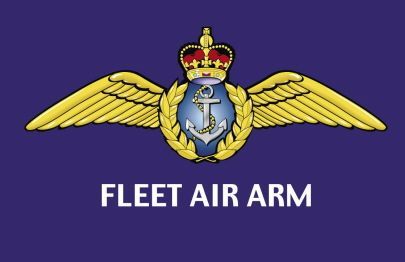
5 notes
·
View notes
Text

CHARACTER STUDY CHART : SPEECH- Wolfgund Waidmanns
Tagged By: Walter von der Vogelweide Tagging: @novaragno @spinxeret @iobartach @goblinfire @wovendeath @the-rogue-dragon @h-osborn @hyenashub @books-and-right-hooks @kylo-wrecked !
► OF SPOKEN LANGUAGES : Lowgerman, Italian (although very much broken), Latin and eventually she learns english based on her old Lowgerman. Wolf had lived for over ten years in Pisa and naturally had learned the most spoken language enough that she can communicate with the people she lives with. However, although its still a few hundred years before the Hanseatic Pact, Lowgerman is already a wildly flourishing tradinglanguage that would through the hanseatic pact eventually a few hundred years later be reintreduced into english and the nordic languages in such a manner that english that already developted as german from lowgerman took in new terms and nowdays one can not hear a sentences In Bergen without hearing a lowgerman word in it. However just because she speaks lowgerman, does not mean everyone speaking lowgerman understands her as her dialect specifically is from around Cologne so someone who learned lowgerman by the Northsea or eastsea would have still great problems understanding her, let alone someone who would speak modern german. Wolf speaks her broken italian and lowgerman with the people in the convent, she speaks lowgerman with the people in the streets especially by the harbour and she speaks latin (or more over writes and reads it) when researching. The only person with whom she actually spoke latin was the Alchmemist / her Worlds Lizard and when he as a nobleman who had joined the Templarorder as a Brother in his youth eventually took her in as his “squire” (as a disguise for her) for her to join Friedrich the II , they continued to speak latin with eachother to keep their conversations private. Wolf will therefor be always understood, but she only seldomly talks to people where she has not to use hand and feet as a extra communicationtool.
► DEMEANOUR : Playful, friendly, restless.
► POSTURE : Leaning on her Dane Axe, leaning her chin on her hands.
► HABITS : Wolf has the habit of putting a singsang behind her voice, sounding as if she is permanently humming.
► ACCENT: “country” │ “backwoods” │ “sailor” │ “noble” │ foreign speaker What should not be forgotten about Lowgerman in contrast to modern german is that its the language both english and german developted from (before both going pickpocketing in other languages grammar and vocabulary), so the words are sounding a lot of more “softer” and bleeding into eachother smoother than modern german would sound. Her accent is still very foreign for a modern english speaker but it would be also foreign for a modern german speaker as lowgerman is indeed its own language.
► ELOQUENCE: educated │ uneducated │ doesn’t use conjunctions │ shortens words │ just makes up their own words! │ old English │dependent on mood or setting
► TONE: loud │ soft │ room volume │ high pitched │ low pitched │seductive │velvety │ speech impediment │ abrasive │ gruff │ shrill │ booming │ matter-of-fact │ toneless │ husky │ gravelly │ breathy │ nasal │ barking │ chatty │ condescending │ musical │ suave │ world-weary │ brash │ authoritative
► HABITS: refers to self in third person │ incorporates different languages/terms/sayings │ uses gender-specific terms │ adapts to audience │ changes pitch around animals or children │ shifts tone when lying │ gives others nicknames │ uses terms of respect towards others
► VOICE REFERENCE: Using the Actor Anna Demetriou speaking “Sophia” as a Reference . While Wolf has a tad deeper womenly voice than average its still mellifluous and the permanent singsang in her voice makes her appear friendly. Its the moments when Wolf stops speaking where she gets dangerouse.
► BOLD ALL THAT APPLY : arse. ass. asshole. bastard. bitch. bloody. bugger. bollocks. chicken shit. crap. cunt. dick. dickhead. frick. fuck. horseshit. motherfucker. piss. prick. screw. shit. shitass. son of a bitch. twat. wanker. pussy. dipshit. in all honesty, have you ever heard a native speaking german go at it? Wolf does not know half the vocables, but she does frequently uses every version of ass (Including the very famouse Arschgeige) because lowgerman as much as modern german is full of vulgarity. And just because the vulgaritys she uses are not in english, does not mean that she does not mean them in a vulgar way because she sure does.
► GIVEN PROPER RELIGIOUS CONTEXT : christ. christ on a bike. christ on a cracker. christ on a crutch. damn. goddamn. godsdamn. hell. holy shit. jesus. jesus christ. jesus h christ. jesus h. roosevelt christ. lord sithis have mercy. jesus, mary and joseph. sweet jesus. seven hells. Wolfs frequently uses “ Harrijasses!” which could be translated to “Lord Jesus / Herr Jesus”. However, cosidering her struggles with religion it is only a manner of speak and not meant in a religious manner.
► THIS OR THAT : contractions or enunciation ? straightforward or cryptic ? jargon or toned ? complexity or simplicity ? finding the right word or using the first word that comes to mind ? masculinity, neutrality, or femininity ? formalities or abrasiveness ? praise or equivocation ? frankness or lies ? excessive or minimal hand gestures ? name - calling or magnanimity ? friendly or blunt nicknames ?
► IMPORTANT QUESTIONS.
DO PEOPLE HAVE A HARD TIME UNDERSTANDING OR HEARING YOUR CHARACTER ? almost always. frequently. rarely. never.
DOES YOUR CHARACTER’S POINT COME ACROSS EASILY WHEN THEY SPEAK ? almost always. frequently. sometimes. rarely. never.
WOULD YOUR CHARACTER INITIATE CONVERSATIONS ? almost always. frequently. sometimes. rarely. never.
WOULD YOUR CHARACTER BE THE ONE TO END CONVERSATIONS ? almost always. frequently. sometimes. rarely. never.
WOULD YOUR CHARACTER USE ‘ WHOM ’ IN A SENTENCE ? yes. no. only ironically.
YOUR CHARACTER WANTS TO MAKE A COUNTERPOINT, WHAT WORD DO THEY USE ? but. though. although. however. perhaps. mayhaps.
HOW DOES YOUR CHARACTER END CONVERSATIONS ? walk away. ask if that’s everything. say that that’s everything. give a proper goodbye. tell their company they’re done here. remain quiet. they don’t.
HOW DOES YOUR CHARACTER ADDRESS OTHERS ? titles. first names. surnames. full names. nicknames. Wolf is not often talking with people with titles and surnames are not yet truely sticking around to people unless they are patronyms or matronyms. She would also not think about putting titles into her speech when referring to people with noble titles, unless its sarcastic. She either uses the first name or puts the persons Profession infront of the first name. “Schulze Heinreich!” with Schulze from Schultheiß, which would be the term for Mayor or “Fischer Frank” for that specific fisherman who is called Frank.
WHAT SOCIAL CLASS WOULD OTHERS ASSUME YOUR CHARACTER BELONGS TO AFTER HEARING THEM SPEAK ? upper. middle. working. lower. In modern germany lowgerman is seen as the language of “the farmer at the edge of the country”. So to a modern speaker Wolf would sound very uncivilized, however for people of her time she would simply sound “Ah. Cologne with a bit of Frankenreich (france)” and thats about it. Wolf specifically is not a person who grew up as the lowest of the low- her father was a Hunter (Waidmann) working for a king with a property frequently visited by a King to hunt, so she did grew up very safely between noblemen visiting the property and later learned in a convent specifcally where children are send to to learn, so it is noticeable in her langauge for the people of her time that she is certainly above average educated.
IN WHAT WAYS DOES THE WAY YOUR CHARACTER SPEAK STAND OUT TO OTHERS ? accent. vocabulary. tone. level. politeness. brusqueness. it doesn’t.
#everytime my lowgerman soeaking grandma says : EYUP#I am mentally transported into a stephen king novella#which is obvious because lowgerman is so closely related to english#its still a philology whiplash for me BECAUS EMY GRANDMA DOES NOT SPEAK A WORD ENGLISH#I only tudied lowgerman for a year at university and whie the historic infos were cool I DEFINITIVE CAN NOT UNDERSTAND IT#even if both my grandmothers and my mother speak it#headcanon#werspinna
3 notes
·
View notes
Video
[ID: a tweet reading, “This is superb: Norwegian sailors singing a sea shanty as they sail into Bergen harbour.” The embedded video shows a modern sailing ship with crew members visible as small black dots on the rigging.]

https://twitter.com/northumbriana/status/846454474654781442
399K notes
·
View notes
Text
4.11., Weintour Stellenbosch, Franschhoek
Der heutige Tag beginnt regnerisch, trotzdem starten wir unsere geplante Tour nach Stellenbosch zum Winetasting.
Erster Stop ist bei "Rust en Vrede". Das Weingut liegt sehr schön zwischen den Bergen und Weinrieden, leider ist es etwas zu kühl um im Freien zu sitzen, daher machen wir es uns im Tastingroom gemütlich und verkosten landestypische Weine. Ein Fläschchen Weisswein wird gekauft um es am Abend im Hotel gemeinsam zu genießen.
Unsere Fahrt geht weiter nach Stellenbosch, uns gelüstet nach einem Café, zuvor besuchen wir aber einen richtigen alten Krämerladen. "Oom samie se Winkel". Ich kenne das Geschäft vom letzten mal und habe unseren Mitreisenden schon davon erzählt. Der Laden ist voll gestellt mit Kuriosen Dingen, altem und neuem, man weiss nicht genau, was ist Deko und was steht zum Verkauf. Die vielen kleinen Räume sind so eng, dass das Umdrehen oft schwer fällt. Irgendwie fühlen wir uns in die Vergangenheit versetzt. Der Geruch im Laden erinnert uns an Omas Dachboden...trotzdem kaufen wir Roibos Tee und Häferl und verlassen die Vergangenheit durch die Eingangstüre.
Ein paar Häuser weiter gibt es den ersehnten Cafe. Zwischendurch wechselt das Wetter immer wieder von Regen zu Sonnenschein. Unsere weitere Fahrt führt uns zum nächsten Weingut, welches uns vom Guesthouse Besitzer empfohlen wurde- "Allee Bleue". Ganz dem Namen gerecht fahren wir eine Allee entlang zum Eingang, diese ist seitlich von Blauen Säulen gesäumt. Wir entscheiden uns das "Signature Tasting" mit den TOP Weinen zu probieren und bestellen eine Platte mit kleinen Köstlichkeiten bestehend aus Käse, Salami, Oliven usw. dazu. Der Wein ist hervorragend und wieder kommt ein Flascherl zum geniessen mit.
Auf der weiteren Fahrt über eine Passstrasse vorbei an Obstplantagen und Weinbergen geht es nach Franchhoek, den Spaziergang lassen wir wetterbedingt aus, und über Sommerset West geht es am späten Nachmittag zurück zum Hotel.
Unser heutiges Dinner gibt es im "Harbour House" in Kalk Bay. Mit einem Seafood Platter mit verschiedenen Merresgetier beschließen wir den Tag. Brav haben wir alles aufgegessen, auf das morgen wieder die Sonne scheint. Bis bald...










1 note
·
View note
Text
Bergen is lovely
I am no longer grumpy; the weather has cleared; I am off the boat; and Bergen is lovely. I collect the Morgan and was surprised to see that the hold was now full and had around 30 cars. There seems to be quite a few people who like me, take the boat for a few stops and not all the cruise. Importantly the Morgan starts and the noise is not too throaty, but hold your breath for the exhaust please.
I am last out and just in front of me is a pulls with a seriously posh Porsche 2 seater. He does a few of the poser Porsche stuff - ie revs a bit; presses a button and puts his roof down (takes me 10mins to get mine down and twice that to put it up); and another button and a back ‘go faster spoiler’ fin comes up. Meanwhile the wife is taking a pic of the Morgan! We funnel round to the exit which is a different and narrower door than when I got on and requires a sharp left hand to line up. Lots of inching forward, reversing and gesticulating taking place. This becomes a matter of pride. I am going to do this in one go, no inching, no reversing and no need for any flapping ….and I did. Hurray for the girls! Big boy (the one who had dropped my keys and I took a shot of him having to lye down to recover them) shouts ‘good luck’ and waves. We are off.
I am going to say two last things about the Hurtigruten and then shut up for ever more. The first is that for those who want a floating retirement village, with jigsaws, knitting and basically nothing much else to do, they do it well. And second, it was me who thought that it would be a good way to travel north/south. No one persuaded me. What of course I should have done is hopped down the coast taking a clutch of the short distance drive on drive off ferries instead. But so what.
I have booked a hotel on the edge of the Bryggen which is the old part of the port and has the Hanseatic league history. I trundle over the cobbles which rattles the entirety of the car and excellent, they a parking place for me. This hotel is a conversion of an old warehouse, is just what I fancied and and I am on what will have been the attic floor and so have a brilliant view. But first I have the call to take from the PRA/Bank of England on liquidity (the swotting I have been doing) and just make it - 90 minutes later I am done and out I go for a look.

Coming into Bergen from the sea means that you can totally see why this has been such an important port and city for so long. Deep water, well sheltered and lots of natural quaysides.


The city was founded some 1,200 years ago and the Bryggen which now lines the east side of the harbour is where the earliest buildings were erected. The Hanseatic league established a trading post here in the 14th century and it grew from there. I should be clear that the Hanseatic proposition which was a group of northern european traders/trading nations forming a loose confederation for the purposes of enabling trade and the free flow of goods, is my view of how to have sustainable long term multi country relationship. The League had huge trade, and economic influence for over 500 years.
Every system has its time, state boundaries and relationships changed and the league disintegrated in the late 1600’s. Meanwhile I read on a history plaque hanging outside a museum, that the reason Norway became part of Denmark from the early 1500’s and for the next three hundred years, was because the Black Death (the Plague) wiped out 60% of their population and that it was our fault as it was brought to Norway in a ship from England.


Having walked the Bryggen, I head for the fish market at the head of the harbour. This is a row of fish stalls with restaurants alongside under canvass. There is a system. Choose your meal from the menu (the three options are fish, whale and shellfish); pay at the stall and join the queue for a seat under canvass.

There is a but. A somewhat raised voice exchange in front of me in ‘globe-ish’ and so understandable, reveals that this area is not allowed to sell alcohol and so all drinks are non alcoholic. However as the raised exchange develops it appears that what the locals do is rock up with their own beer or wine and then order at the restaurant an alcohol free drink. So I nip back to my hotel for that packet of Chablis; return to the fish market; check it’s ok; get a seat; and adventurously order the dish of the day. Pathetic I know, but delicious it was.
Streets are awash with all age groups.
Sun is setting -or as much as it does at this time of year- and the evening clouds suggest that tomorrow will be wet.


0 notes
Text
Norway Delivers Superlatives
Looking at the geography of Norway and riding here, it is no surprise to learn that the country has over 900 road tunnels with a total length over 750 kilometers - and none of them appear to have been dug using a modern boring machine; just good old jackhammer and dynamite.
It feels like we have ridden half of them already. We used one of Norway’s longest undersea tunnels (Bamlafjord 8Km) to get to Bergen, their third longest tunnel (Gudvangan 12Km) to get to Flåm and today we rode the longest road tunnel in the world - the Laerdals Tunnel - that is 24.5 Km long. So long that there are three huge domed areas about every 6 Km with tinted white lights big enough to pull over and take a break and to interrupt the hypnotic experience and keep you alert.
Onwards along fjords to climb into the clouds to Tindevegen Pass with a surprising toll both at its highest point and on to the Sognefjellet; Norway’s highest road at 5,000 feet passing glaciers and thousands of lakes that look like high elevation tide pools and dropping into steep and deep valleys with waterfalls streaming down every vertical surface.
Then a huge fast rip up big sweeping curves over the next mountain and finally a roller coaster ride back to sea level on Geiranger Fjord and another cruise ship harbour that is 130 miles from the open sea. Our hotels rooms have one of the best room views you could find.
An amazing day on a motorcycle.








0 notes
Text
Bergen
The wettest city in Europe, Bergen lived up to its reputation on my couple of days visiting in the middle of summer, with regular downpours and very wet shoes. Other than the weather it is an attractive place, with plenty of heritage building around an impressive harbour setting surrounded by forested hills. The most popular views of the city are from Fløyen, the closest hill to the city. I was…

View On WordPress
#Bergen#Bergen Cathedral#Bergen Domkirke#Bergenhus Fortress#Bryggens Museum#Festplassen#Fløibanen#Fløyen#Gamle Bergen Museum#Hanseatic Assembly Rooms#Korskirken#Norway#photography#Rosenkrantztårnet#Schøtstuene#Skomakerdiket#St Mary&039;s Church#The King Håkon&039;s Hall#The National Theatre#travel
0 notes
Text
Graveyards by the sea

Abandoned churches dotted along the Aberdeenshire coast give it a pleasingly godforsaken feel.
The regional council has put out a guide to 12 of the best such ruins. Here is my short list, from south to north (map at the end of this post.)
The remains of St Mary's Church, in Cowie - pictured above and below - sit oddly between a golf course and cliffs overlooking Stonehaven Bay.

The 13th-century chapel was dedicated to "St Mary of the Storms" but fell into disuse in the 1560s. Perhaps the newly Protestant kirk objected to involving the Holy Virgin in maritime meteorology. A panel at the site only says that the church "was unroofed by the ecclesiastical authority on account of certain scandals".
Locals recycled the crumbling walls as building material, despite a rumour that the stones would "rain blood upon any house built with them".
There was an attempt to rebuild the chapel in the 19th century. The churchyard includes a memorial to a Stonehaven lifeboat crew who perished in a failed rescue in 1874. Far from bringing succour to seamen, it seems, the site was jinxed. Parishioners deserted it.
The adjacent golf clubhouse, on the other hand, is doing brisk business.
Twenty kilometres to the north is another former church in an incongruous setting. The ruins of St Fittick's Church stand next to the south shore of Aberdeen harbour.

The 12th-century chapel was named after an Irish monk who set out to evangelise the Picts in the 600s. According to legend, Fittick's boat was caught in a storm. He told the sailors that salvation lay in Christ. They threw him overboard to placate Manannán mac Lir, the god of the sea.
But the holy man had the last laugh. He managed to swim to the shore. When the villagers asked him how he had survived the wrath of Manannán mac Lir, Fittick said: "Salvation lies in belief in Christ."
The church testifies to the complex relationship between Scots and their fellow Celts across the Irish Sea.

The kirkyard features the gravestone of one William Milne, a victim of Britain's civil wars of the 17th century (my post about the Scottish part of that conflict is here).
Milne, a farmer, joined a Protestant "Covenanter" militia during a royalist offensive backed by Irish Catholics. The Latin epitaph says that he fell in 1645"for the cause of Christ... by the sword of a savage Irishman".
Fifty kilometres up the coast is Longside Old Parish Church, built in 1619-20.

The churchyard features many memento mori symbols: skulls and bones, hourglasses and the like.
My favourite gravestone is that of William Reid, who "depairted this life" in 1702 and "rests in hops of blesed resurection". I quote this not to mock the spelling, but my own obsession with spelling.
Soon I will be gone, as will the linguistic proprieties I held so dear. For a pedant, this stone is the most poignant memento mori of all.

St Mary Chapel, Rattray, is another monument to transience.
Rising from flatlands that seem to merge into the sea, it is all that remains of the "royal burgh" of Rattray.
That status was granted by Mary Queen of Scots to encourage local clans to engage in commerce rather than feuds. Thus Rattray gained the right to hold markets and trade far and wide.
The sea had other ideas. Winds and currents filled the harbour with sand over the years. By the 1800s the village had vanished, as if engulfed by the soggy ground.
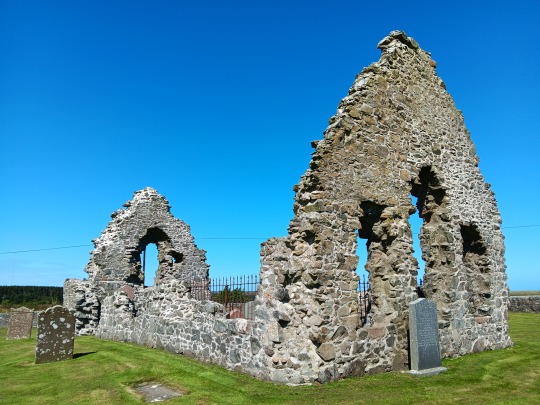
But the shell of the 13th-century chapel still stands, at the end of a single lane that seems to lead nowhere.
A few kilometres inland, on the outskirts of Fraserburgh, is St Ethernan's, Rathen.
A front gable and a side wall are all that's left of this 17th-century parish church.
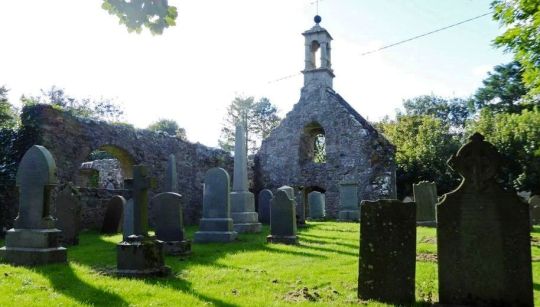
The stars of the kirkyard are John Greig and Anne Milne, a couple of tenant farmers who happened to be the great-great-grandparents of Norwegian composer Edvard Greig.
One of their sons emigrated and became a successful merchant in Bergen.
Three generations later, little Edvard learned how to play the piano and the rest is musical history.
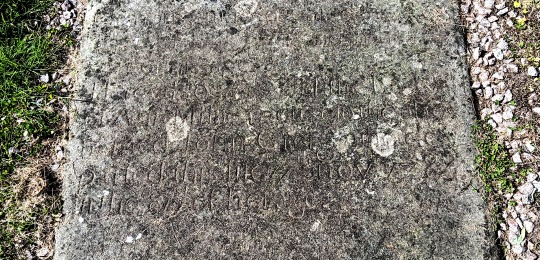
The inscription on the gravestone is quite worn but someone deciphered it: "Here lyes the remains of JOHN GRIEG, late tenant in Mostoun of Cairnbulg d 6 Jan 1774 in his 71st year. Here also was laid the body of ANN MILNE, spouse of above named John Greig d 17 Nov 1784 in 81st year. This stone is erected to his memory by his surviving children."
The survivors refrained from mentioning the couple's connection to an illustrious descendant. Another lesson in humility!
Fraserburgh is home to an informative Museum of Scottish Lighthouses. Those uninterested in nautical beacons can happily skip that town and follow the coastline to the west.
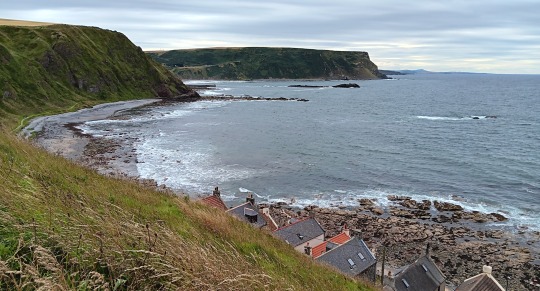
The highlights of the northern Aberdeenshire seaboard are fishing villages that are little more than strip of cottages between water and cliff.
They look cute now but were born of desperation. Farm labourers settled these unpromising shores in the 18th century, after being evicted in the Highland Clearances.
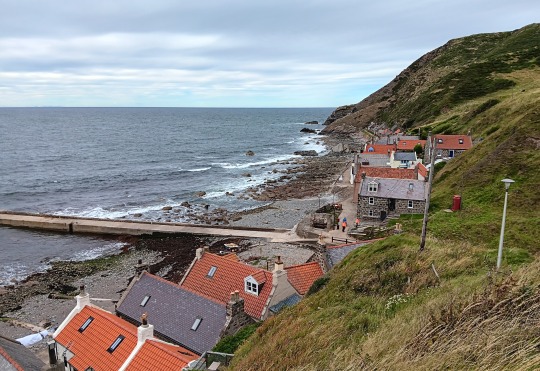
One of the most picturesque of those villages is Crovie (above). There is not even room for a road either in front or behind the cottages.
The most famous is Pennan, which was put on the map by Bill Forsyth's film Local Hero.
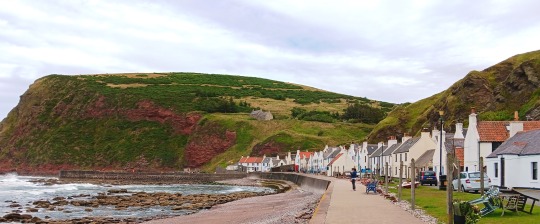
Its phone box plays a big part in the movie - made in the dark, pre-mobile ages.
Forty years on, the red kiosk is still there.
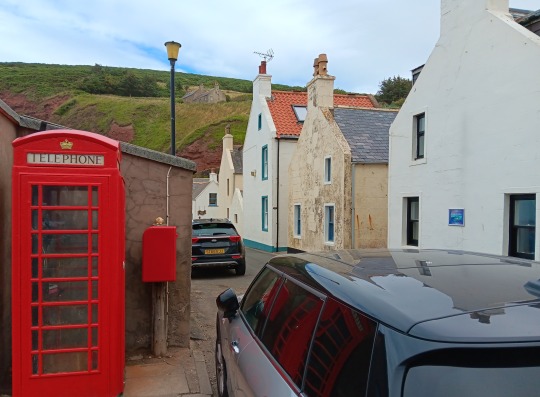
The Aberdeenshire council has apparently kept it in service as a tourist attraction.
Talking about maps, here's the one I promised (forgive its crudeness: the only cartographical tool my incompetence can handle is Google My Map.)
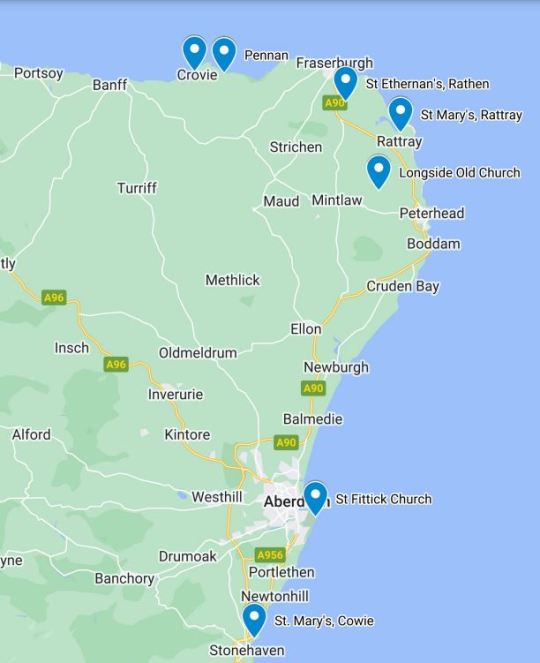
1 note
·
View note
Text
Geheimtipps: Sehenswürdigkeiten in Sydney und New South Wales
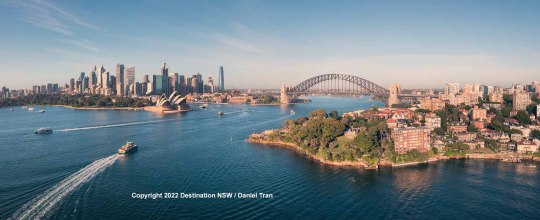
Sharlene Lowe ist Flugbegleiterin bei der internationalen Airline Emirates. Sie verrät uns als Einheimische Geheimtipps für Sehenswürdigkeiten in Sydney und New South Wales.

Sharlene Lowe ist Flugbegleiterin bei Emirates und verrät ihre persönlichen Empfehlungen für Sehenswürdigkeiten in Sydney und New South Wales in ihrem Heimatland Australien. / Foto: Emirates
Hier ist ihre Liste
- Jenolan Caves in den Blue Mountains (https://www.jenolancaves.org.au/) : Die Jenolan Caves sind ein beeindruckendes Kalksteinhöhlensystem mit atemberaubenden Formationen, unterirdischen Flüssen und geführten Touren, die für Besucher ein einzigartiges und magisches Erlebnis darstellen. Sie gehören zu den ältesten Höhlen der Welt und sind für ihre uralte geologische Bedeutung bekannt. Noch heute gibt es dort Kunstwerke zu sehen, die von den Aborigines, die hier vor Zehntausenden von Jahren lebten, an die Wände gemalt wurden. - Wollomombi Falls (https://www.nationalparks.nsw.gov.au/things-to-do/picnic-areas/wollomombi-falls-picnic-area): Einer der höchsten Wasserfälle Australiens ist mit einer Fallhöhe von 230 Metern ein weiteres faszinierendes Naturwunder, das im oberen Teil des Oxley Wild Rivers National Park liegt. Zu den Wasserfällen führt der Wollomombi-Wanderweg, der exotische Vögel und andere Wildtiere beheimatet - ein idealer Ort für Naturliebhaber. - Warrumbungle National Park (https://www.nationalparks.nsw.gov.au/visit-a-park/parks/warrumbungle-national-park): Dieser Park ist mit seinen beeindruckenden Felsformationen und dem ausgewiesenen Dark Sky Park ein Paradies für Sternengucker. Da es hier keine Lichtverschmutzung gibt, ist der Nachthimmel besonders lebendig und bietet fantastische Möglichkeiten für Buschwanderungen und Sternenbeobachtungen. - Bellingen (https://www.visitnsw.com/destinations/north-coast/coffs-harbour-area/bellingen): Auf halbem Weg zwischen Sydney und Brisbane liegt diese unkonventionelle Stadt zwischen den Bergen und dem Meer. Hier herrscht eine künstlerische und entspannte Atmosphäre. Auf dem wöchentlichen Bellingen Farmers Market werden regionale Spezialitäten und Produkte direkt vom Bauernhof angeboten. - Sydney Harbour Bridge Pylon Museum: Hier lässt sich die reiche Geschichte eines der wichtigsten Wahrzeichen der Stadt in einem Virtual-Reality-Erlebnis entdecken. Nach dem Aufstieg von 200 Stufen zum Pylon Lookout erwartet Besucher ein malerischer Blick auf die lebhafte Stadt Sydney. Von dort aus reicht der Blick auch bis zur Sydney Harbour Bridge und zum üppigen botanischen Garten. - Bronte (https://pylonlookout.com.au/): Ein weiterer einzigartiger Ort ist Bronte - ein Juwel am Strand mit herrlichen Meeresschwimmbecken, grünen Parks, die sich perfekt für Picknicks am Meer eignen, und kristallklarem Wasser, das zum Schnorcheln und Tauchen einlädt. Auf der südlichen Landzunge finden sich die Bronte Baths, ein historisches Schwimmbad im Meer aus dem Jahr 1887, sowie der Bogey Hole Rock Pool. - Manly Wormhole (http://www.queenscliff.com.au/): Das Manly Wormhole ist eines der historischen Geheimnisse Sydneys, von dem aus Reisende einen malerischen Blick auf den Freshwater Beach und auf den Ozean genießen, besonders bei Sonnenuntergang. Ganz in der Nähe des Strandes kann im Restaurant Pilu at Freshwater gespeist werden. Das Lokal serviert italienische Küche und ist von Jasmin-Gärten umgeben. Ein idealer Ort für ein Abendessen, bei dem Reisende die Landschaft in ihrer vollen Pracht genießen können. - Paddington Reservoir Gardens (https://www.cityofsydney.nsw.gov.au/parks/paddington-reservoir-gardens): Wie wäre es mit einem Spaziergang durch die makellosen Paddington Reservoir Gardens? Auf dem Dach befinden sich ein wunderschöner Garten und spannende Graffiti-Kunst. Die Gärten sind auch der perfekte Ort, um den Sonnenuntergang zu beobachten und zu sehen, wie die Beleuchtung die Gärten optisch verwandelt. Titelfoto / Rechts die Harbour Bridge, links die Oper / Copyright 2022 Destination NSW / Daniel Tran
Auch interessant:
Read the full article
0 notes
Link
Fun Things to Do in Bergen | Travel Guide (2023) | Best Places to Visit
0 notes


